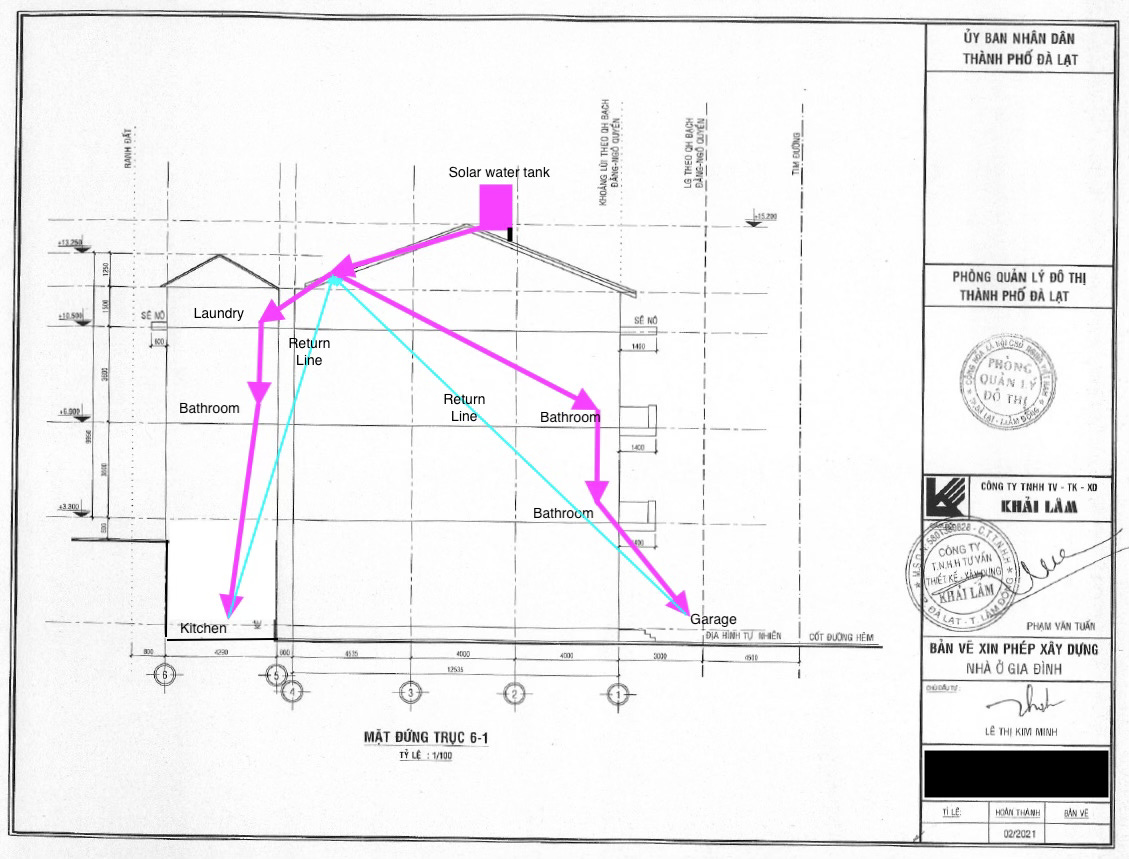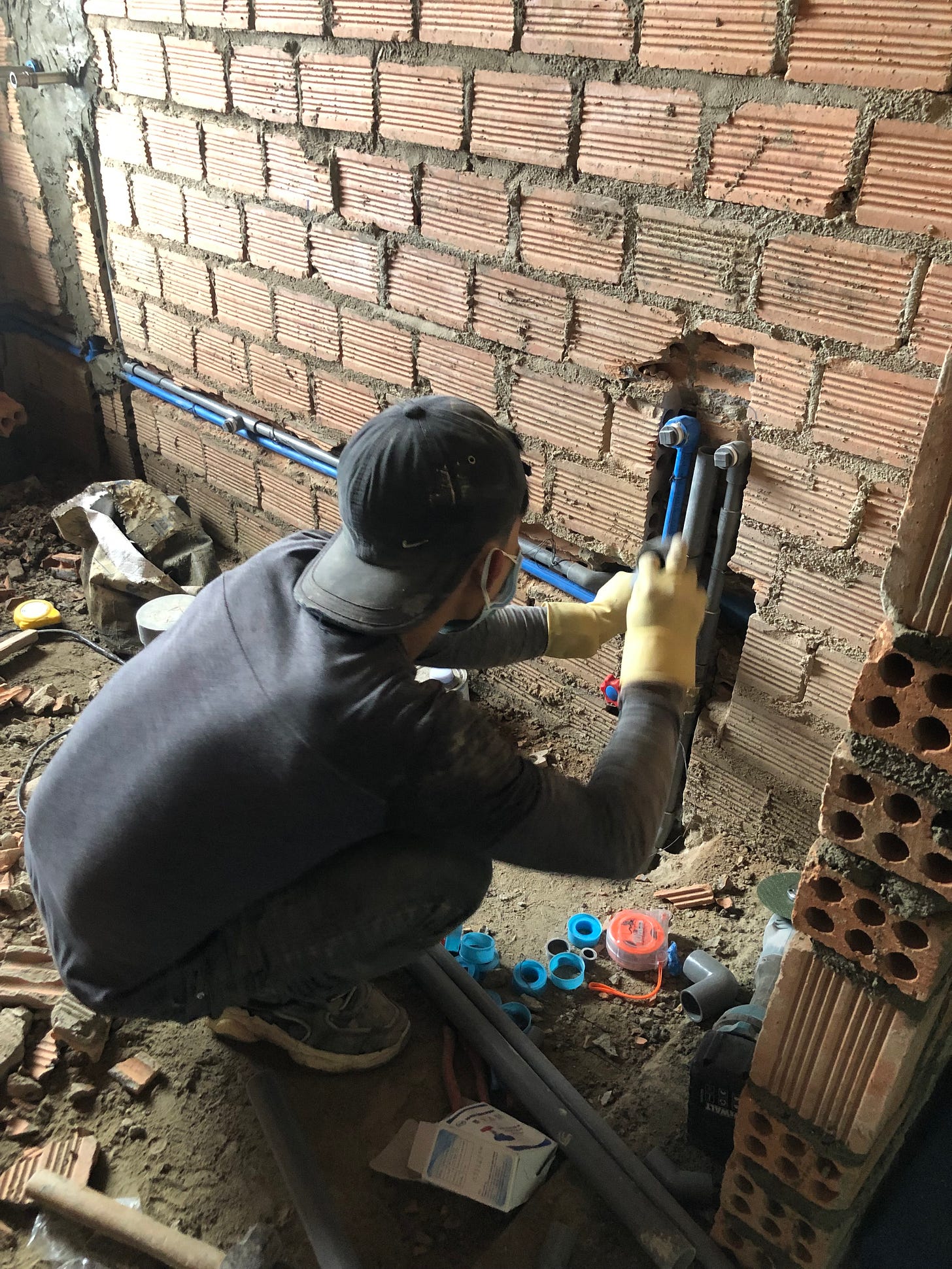Building a House in Việt Nam — Part 4
Can water distribution be passive/aggressive?
This Substack is about life in Việt Nam from the viewpoint of a 10-year expat who spent his first 60 years in a low-context culture.
Tapping the ❤️ at the top or bottom of the page and/or leaving a comment will let me know your thoughts and feelings, which are important and valuable to me. Doing so also helps others find this article. Thank you.
This is Part 4 in a series about my experiences building a bespoke house in Dalat, which sits at about 1500m (~4900ft) altitude in the Central Highlands.
Previous posts include:
Every place in the house where there’s water has both hot and cold. Unfortunately, one of the things I thought too little about before we moved in was how the hot water from a roof-mounted solar system boosted by an on-demand heater would flow to various spigots and shower heads.
Based on the time it takes to get hot water in various parts of the house, I’d give pretty strong odds that the architect designed the cheapest way to distribute water through our house. My guess? He ran a loop from the roof, down the back of the house, then across and up the front side of the house.1
Unfortunately, that gives me a long waiting time for hot water in my second floor bathroom at the end of the line — two to five minutes, depending on the ambient temperature and how many showers the rest of the family enjoyed in the past 30 minutes.
The more I learn about communicating in Vietnamese culture, the more I realize I could’ve been a lot more culture-friendly when I insisted on doing things the best and most efficient way. By that, I mean that I do not accept the Vietnamese standard of
You eventually have hot water, so what’s the problem?
I, like the four Vietnamese nationals living under this roof, want hot water sooner rather than later. Fortunately, if it ever gets worse or I get more impatient (it might be possible), each bathrooms has provisions for in-bathroom on-demand water heaters, which are the standard nationwide.
I want to make a suggestion to the plumber who did our house and every other plumber out there: the next time you sees plans like that, offer the homeowner a system upgrade. The homeowner will be happier and it’s an opportunity for you to make a bit more profit.

Had this been the second house I built from scratch, I would’ve known to check the plans more closely.
I don’t blame the plumber. His culture does not allow him to offer the client a better-for-the-client option because to do so would insult the architect. If I make that suggestion to him, the Vietnamese default to a passive/aggressive-communicating culture dictates that he interpret it as a Westerner plumber would if I told them they did a terrible job and are a bad plumber. In this case, that is very far from the truth; the guy’s a very good plumber.
The best Vietnamese-friendly solution I see is to make the suggestion to the homeowner and ask him to present it to the architect as the homeowner’s idea, keeping the plumber out of it. Which I would’ve done, IF I’d paid closer attention to the drawings.
If you ever need a great plumber in Dalat for new construction or to fix a leak, ask in a comment and I’ll hook you up. He’s also a great electrician.
Just remember to check the drawings BEFORE they start tearing holes in the walls to route the pipes.
I’ve misplaced my copy of the drawings, so I can’t check until they turn up. And no, the architect doesn’t have them because, “We delete them after the house is built.”It’s Vietnam, remember?



